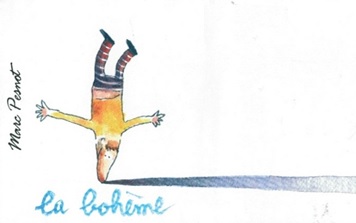The term fining is bandied about in the wine community, but when we start to quiz people about what they really mean we get a surprising range of answers, particularly as to why these processes are so common.
But before we talk about wine we would like to talk about honey. There is a world-wide trend towards unprocessed, unfiltered, unheated honey. Why? Because these processes strip flavour from the honey. Exactly the same applies to wine. If a wine is filtered or, more importantly, fined with the addition of foreign substances which remove particles from the wine, then flavour is removed!
So we will briefly explore some of the things that wine is subjected to in pursuit of clarity and gold medals through the fining process.

On the label above from Marc Pesnot of Domaine la Sénéchalière you can see the words:
Ni acidification, ni collage, ni leverage
This means that neither acid has been added, nor has the wine been ‘fined’ nor have yeasts been added. The French word ‘collage’ refers to fining – the process used to remove solid particles from a wine through ‘gluing’ foreign particles to the solids in suspension so that together they become heavier and precipitate out and fall to the bottom of the storage vessel.
So, that is the fining process but what are the foreign particles that are used to help precipitate these solids when a wine is fined? Let’s explore just a few examples of how to fine a wine to give you an idea of some of the substances that can be added to wine (not ours though!) to assist this process.
Isinglass
Isinglass is a powder made from dried bladders of a range of tropical and sub-tropical fish. The process of fining by adding isinglass to wine to clarify it was probably started in Germany and spread to the United States and Australia as well as many other countries.
Of course there is an issue here for two reasons. The first is that isinglass can contain the allergen parvalbumin. The second is that it is a fish product and vegans and vegetarians might inadvertently drink wines with traces of this fish product present.
In many countries there is also no requirement to state on the wine label that a fish product has been used in the clarifying process.
In Australia it used to be the case that the use of fish products in wine had to be mentioned on the label if isinglass had been used to clarify the wine. However, in an extraordinary sweep of logic the food safety authority, the FSANZ, removed the necessity after an aggressive campaign by the food, wine and beer industry. In their judgement they said the decision to remove labelling would:
provide fish-allergic consumers with increased choice of beer and wine products[1]
Obviously, if they don’t know that there might be parvalbumin in the wine their choice is broader!!! And of course, vegans and vegetarians are similarly in the dark.
Egg whites
A solution consisting of egg whites, water, potassium chloride (KCl) and potassium chlorate is added to wines in order to remove phenols that cause astringency by precipitation as the proteins in the egg white bind to the large polymers making them even heavier and causing them to precipitate to the bottom of the vessel.
As with isinglass this causes problems for vegans as there are very few countries where it is compulsory to mention the use of egg products on the label.
The use of egg whites was once so widespread in Bordeaux that a new pastry recipe based on a custard was invented (for the famous canelé) to use up the stranded egg yolks resulting from this process. The fine process was widespread because it softened the sometimes harsh red wines of the region allowing them to be drunk at a younger age.
Casein
Casein, the main protein in milk is used in almost an identical way to the addition of egg whites. The addition of casein precipitates the larger phenolic compounds from the wine thus reducing the astringency but not with the same efficiency as isinglass.
Bentonite
And now we get to the almost Monty Python position where some people add dirt to clean up a wine!
Bentonite is clay. This clay has high levels of aluminium silicates and is often used when a winemaker wants to fine a wine. The clay particles are negatively charged therefore they attract positively charged proteins in the wine that need to be eliminated.
Other stuff
We haven’t even started on what else can be added to fine a wine. The products include carbon products, a synthetic polymer called Polyvinylpolypyrrolidone, skim milk and many more.
Conclusion
We just don’t want any of this to happen in our wines. Every one of these processes strip out flavour just as they do with honey. In addition, there has been a lot of research to show that only a proportion of these additions to the wine are removed as a result of precipitation, so some of the fish products or eggs or milk products remain in the wine making them unsuitable for vegans and vegetarians.
So if you see the words “Ni Collage” on a label grab it. It means that the producer is serious about their wine. They don’t want to strip out the goodness.
Celebrate the difference!
[1] Food Safety Australia New Zealand Final Assessment Report Application A490. 20 March 2009























